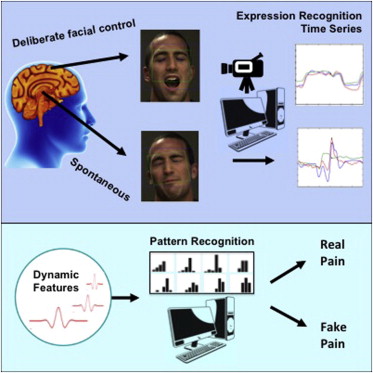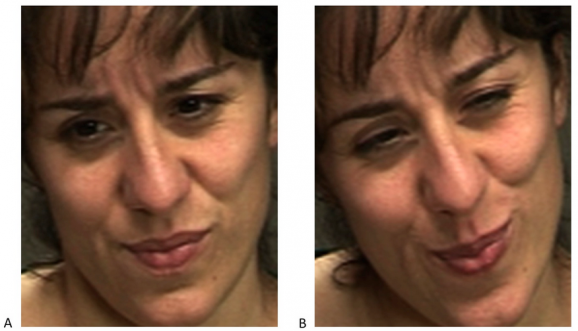Computers Can Detect Fake Facial Expressions Better Than Humans
This article is more than 2 years old
 We all fake it sometimes — I smile at my students when they’re getting on my nerves and I pretend to be interested when people around here talk about the Patriots. I’ve never really had a good poker face, though, and just as I can tell when people are faking their facial expressions (at least, sometimes), I wonder how often they can tell when I’m doing it. I’m not sure I’ll ever know the answer to that question, but what I do know is that computers have proven better than humans at identifying fake facial expressions. Oh, the irony!
We all fake it sometimes — I smile at my students when they’re getting on my nerves and I pretend to be interested when people around here talk about the Patriots. I’ve never really had a good poker face, though, and just as I can tell when people are faking their facial expressions (at least, sometimes), I wonder how often they can tell when I’m doing it. I’m not sure I’ll ever know the answer to that question, but what I do know is that computers have proven better than humans at identifying fake facial expressions. Oh, the irony!
Simulating emotions is actually a product of evolution — social evolution, anyway. But computers are thus far immune to the niceties of social life. Researchers at the University of Toronto and the University of California San Diego published an article about the “automatic decoding of facial movements” in Current Biology. In their study, they found that humans had a roughly 50/50 chance of distinguishing real facial expressions of pain from fake ones. With a little training, that number improved to 55%, but still, far from dependable. The computer, on the other hand, could tell real from fake pained faces 85% of the time.

The scientists believe it’s because the computer is more cued in to subtleties, to the extent that it can tell involuntary from voluntary expressions and movements. “By revealing the dynamics of facial action through machine vision systems our approach has the potential to elucidate ‘behavioral fingerprints’ of the neural-control systems involved in emotional signaling,” says scientist Marian Bartlett, who worked on the project. According to their research, the biggest indicator of real vs. fake emotion is in the person’s mouth.
The way the mouth opens, and how much, holds many clues that most human observers miss. It turns out that organic pained expressions contain more variations in the way the mouth opens, and that happens sporadically, rather than at regular intervals. In fact, the researchers will be conducting further studies about whether “over-regularity is a general feature of fake expressions.”
You might be wondering about the study itself — in order to gauge real or fake pained expressions, wouldn’t the scientists have to cause pain to the subjects? Yep. They made subjects watch the season finales of Lost and Battlestar Galactica, Clockwork Orange style. Just kidding — that would never work, given that no one would be faking the pain. What they actually did was to make people hold their arms in ice water for a minute. That’s less interesting, but probably makes more sense.
The program could be used to detect or measure pain and/or attempts to mask pain. It also might be possible to use the program as something like a polygraph test, checking for truthfulness or indications of psychopathology. In other words, computers might help us become better liars. Or they’ll make themselves into better liars. I’m particularly interested to see what the computer program would think of a robot’s expressions.












